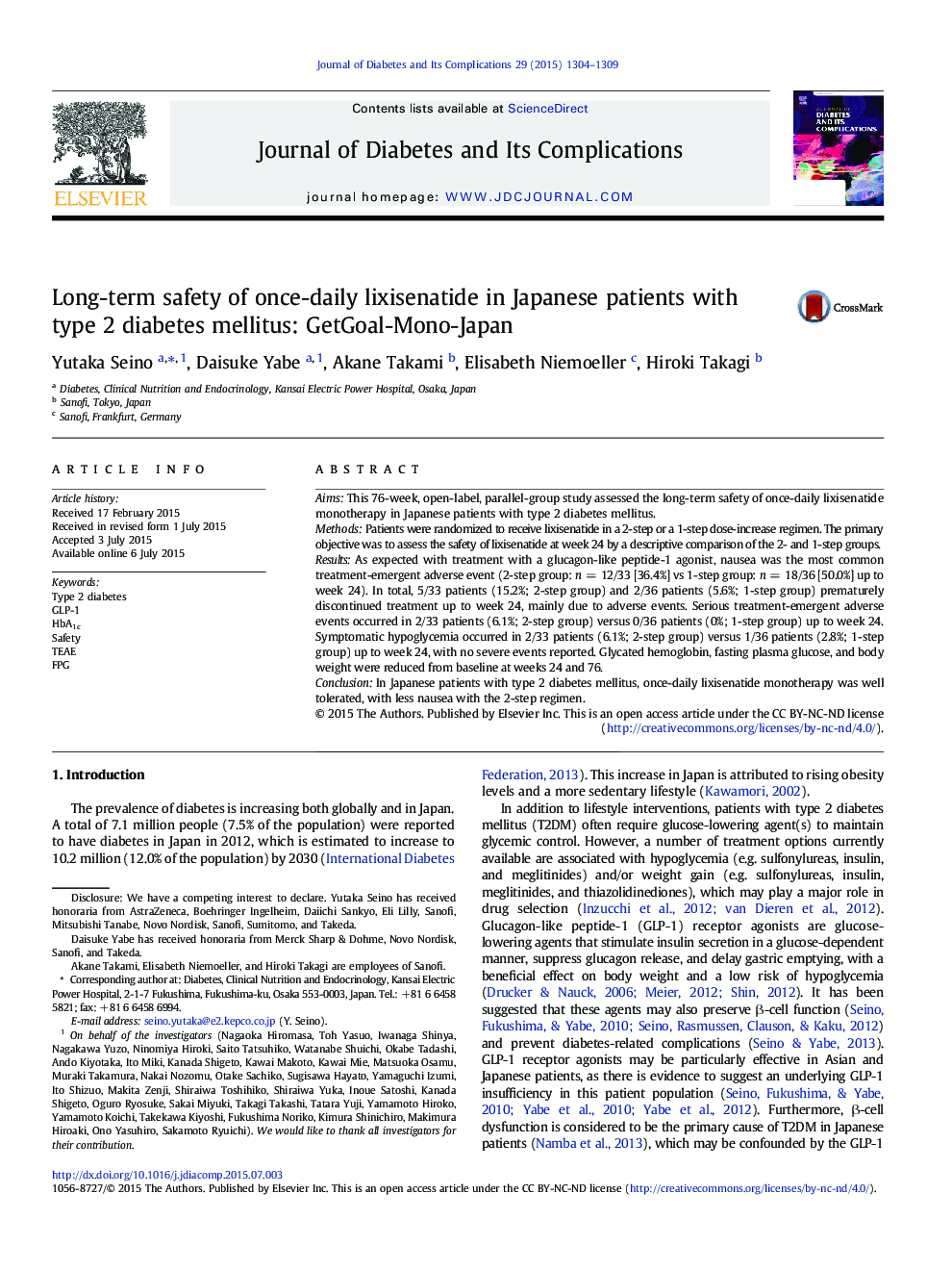| Article ID | Journal | Published Year | Pages | File Type |
|---|---|---|---|---|
| 5902388 | Journal of Diabetes and its Complications | 2015 | 6 Pages |
AimsThis 76-week, open-label, parallel-group study assessed the long-term safety of once-daily lixisenatide monotherapy in Japanese patients with type 2 diabetes mellitus.MethodsPatients were randomized to receive lixisenatide in a 2-step or a 1-step dose-increase regimen. The primary objective was to assess the safety of lixisenatide at week 24 by a descriptive comparison of the 2- and 1-step groups.ResultsAs expected with treatment with a glucagon-like peptide-1 agonist, nausea was the most common treatment-emergent adverse event (2-step group: n = 12/33 [36.4%] vs 1-step group: n = 18/36 [50.0%] up to week 24). In total, 5/33 patients (15.2%; 2-step group) and 2/36 patients (5.6%; 1-step group) prematurely discontinued treatment up to week 24, mainly due to adverse events. Serious treatment-emergent adverse events occurred in 2/33 patients (6.1%; 2-step group) versus 0/36 patients (0%; 1-step group) up to week 24. Symptomatic hypoglycemia occurred in 2/33 patients (6.1%; 2-step group) versus 1/36 patients (2.8%; 1-step group) up to week 24, with no severe events reported. Glycated hemoglobin, fasting plasma glucose, and body weight were reduced from baseline at weeks 24 and 76.ConclusionIn Japanese patients with type 2 diabetes mellitus, once-daily lixisenatide monotherapy was well tolerated, with less nausea with the 2-step regimen.
